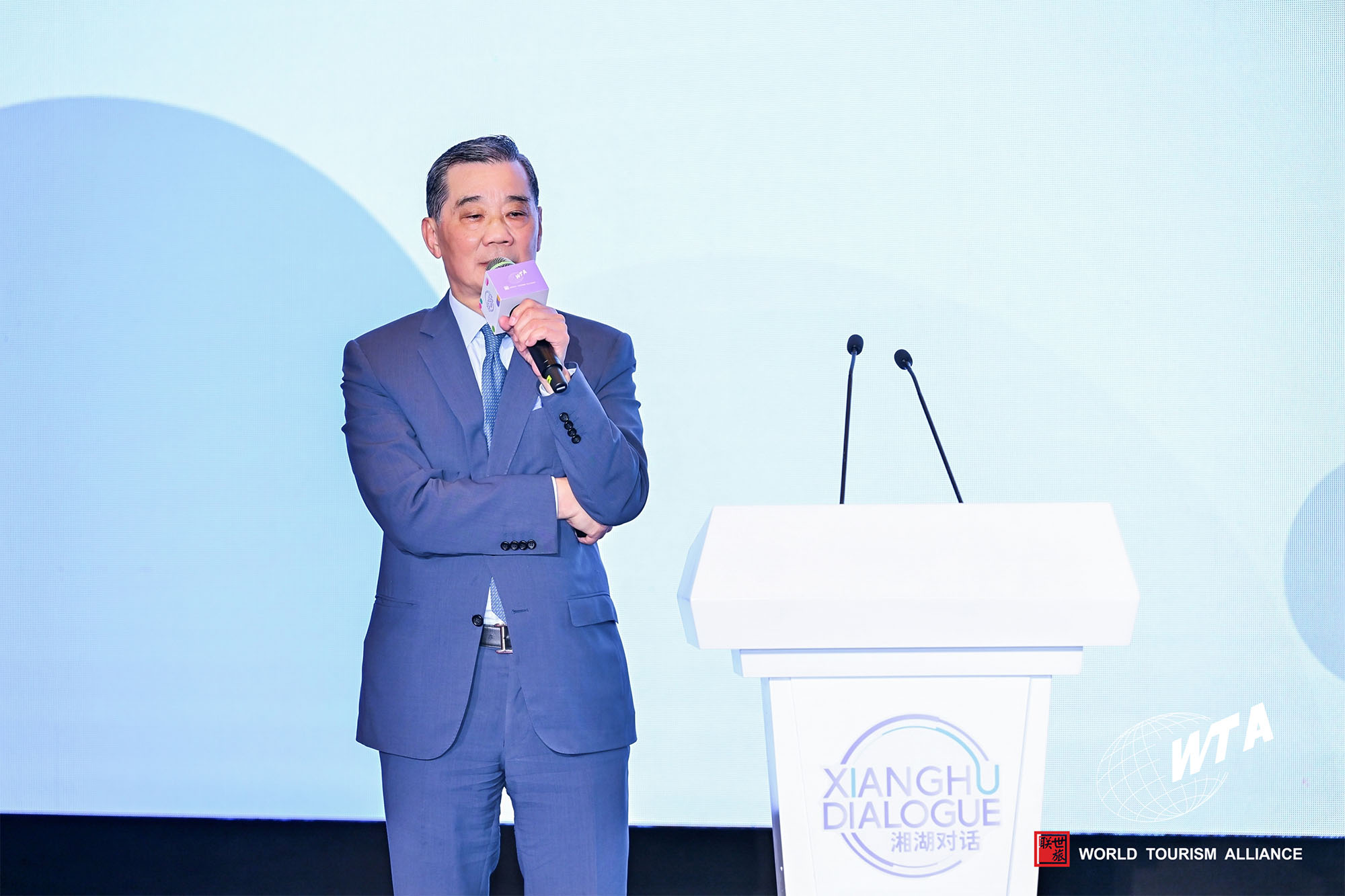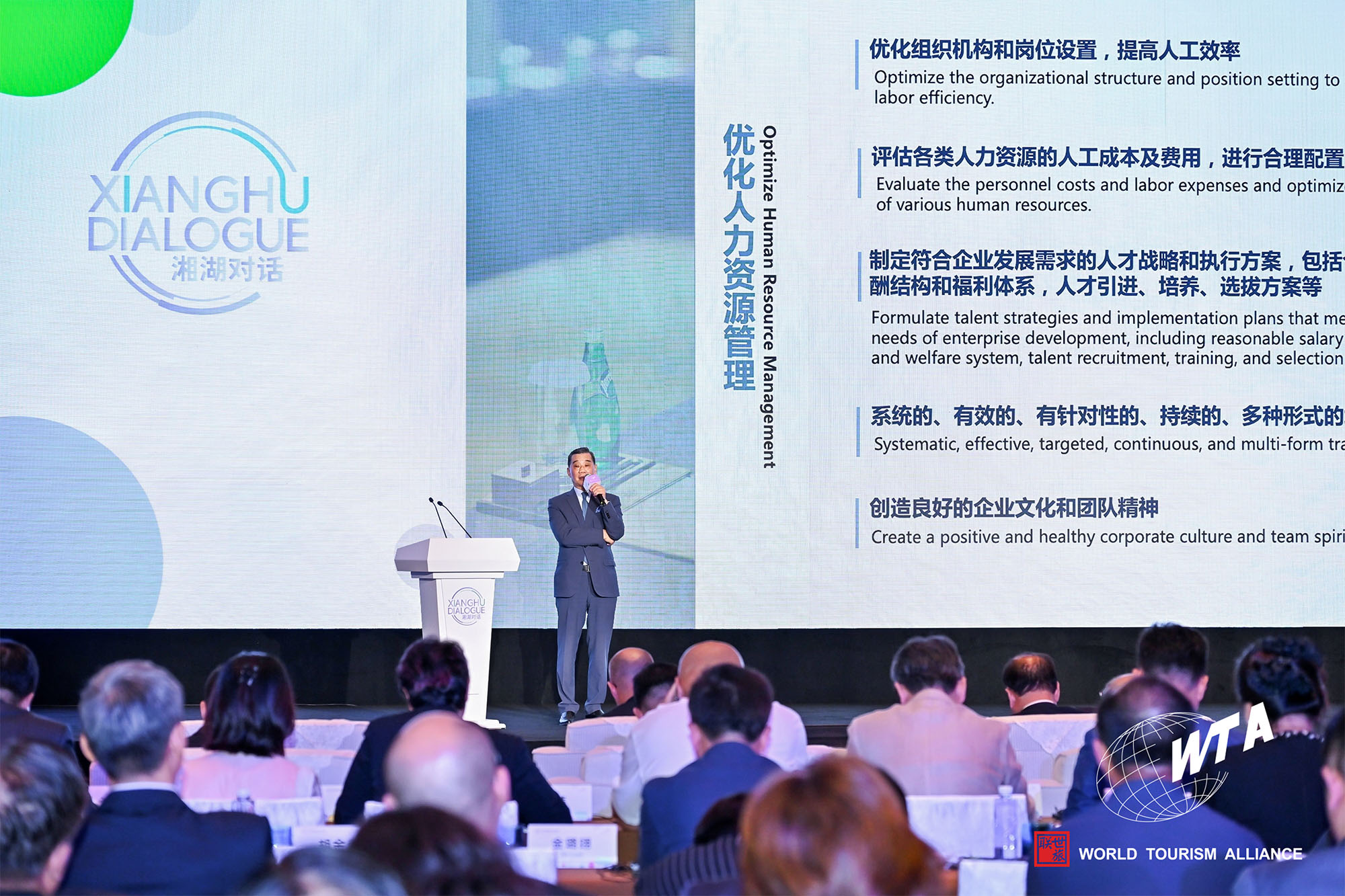2024-11-23
October 31, at the WTA· Xianghu Dialogue 2024 in Sanya, Hainan, Mr. Stephen C.T. HSU, General Manager of Legendale Hotel Beijing, delivered a keynote speech on "Human Resources Management and Hotel Development". Below is a summary of the key points discussed.

The hospitality industry is fundamentally service-driven, with human resource management at its core. Let me begin by sharing some data on the trends in the labor-to-room ratio from 2014 to 2023. In 2014, the labor-to-room ratio for five-star hotels was 1.27, while it stood at 1.11 for four-star hotels and 0.84 for three-star hotels. By 2023, these ratios had decreased to 0.96 for five-star hotels, 0.59 for four-star hotels, and 0.38 for three-star hotels. This decline is welcome news for hotel managers, as it indicates lower labor costs. However, it raises a key question: how can service quality be maintained or improved as the labor-to-room ratio decreases?
Next, let’s look at two other key metrics. First, revenue per employee. In recent years, three-star hotels have shown consistent growth in this area, even surpassing four-star hotels in 2019. This trend prompts a critical reflection: why are four-star hotels underperforming relative to three-star hotels? Although five-star hotels still lead in revenue per employee, the gap between three-star and five-star hotels is narrowing. Could three-star hotels eventually overtake five-star hotels? This possibility merits close observation. The second metric is profit per employee. By 2023, three-star hotels had outperformed both four-star and five-star hotels in this category. These findings highlight a significant challenge: how can four-star and five-star hotels unlock employee potential to maintain service quality? Improving employee benefits and compensation has become a pressing issue for the industry, particularly for senior management.
China’s hospitality industry faces several bottlenecks in human resource management. First, while the younger generation of managers represents a positive trend, some lack experience. Second, recruiting and retaining service staff is difficult due to high turnover. To address this, hotels must offer better compensation and benefits to retain employees and attract talent from other industries. Third, the increasing reliance on temporary and part-time workers presents its own set of challenges. The industry currently employs five categories of staff: permanent employees, temporary workers, part-time workers, outsourced labor, and interns. Moving forward, a stable workforce will be critical, and careful planning of employment strategies is essential. Fourth, improving management training outcomes remains a challenge. While hotels continue to offer training programs for employees and management, the challenge lies in achieving measurable results. The focus must shift from the quantity of training to its impact, with an emphasis on practical outcomes and streamlined management structures.
To optimize human resources management, the hospitality industry must adopt practical measures: 1. Optimize Organizational Structures and Job Roles: Evaluate human resources allocation across all positions and departments to ensure efficient use of manpower. 2. Assess Labor Costs and Resource Allocation: We should examine the following questions: Does the hotel genuinely need so many roles? Are employees’ full potential and work hours being utilized? Are kitchen tasks excessively specialized, or should employees be trained in multiple skills? Could savings from streamlined operations be redirected toward incentivizing remaining staff? 3. Develop Tailored Talent Strategies: Implement salary structures, benefits systems, and talent recruitment and development plans that align with business needs. 4. Enhance Employee Training Programs: Offer systematic, effective, and diverse training to improve employees’ skill sets, ensuring programs are targeted and impactful. 5. Foster a Strong Corporate Culture: Create a positive work environment and build team cohesion. A true corporate culture should go beyond surface-level slogans to genuinely attract and retain talent.
Let us also address a much-debated topic: can artificial intelligence (AI) replace human labor? While AI can indeed substitute many tasks, its capabilities have clear limitations. In the hospitality industry, human-centric care and creating unique guest experiences remain irreplaceable. Hotels demands skills such as social interaction, negotiation, empathy, creativity, and aesthetic sensibility—qualities AI cannot replicate. Among all industries, the hospitality sector has a replacement rate of just 0.4% because it thrives on human connections and warmth.

Finally, I encourage all partners in the hospitality industry to focus on enhancing employee welfare, offering clear career development plans, and creating a professional environment that motivates staff to grow and succeed. I firmly believe that the hospitality industry has a bright and promising future!